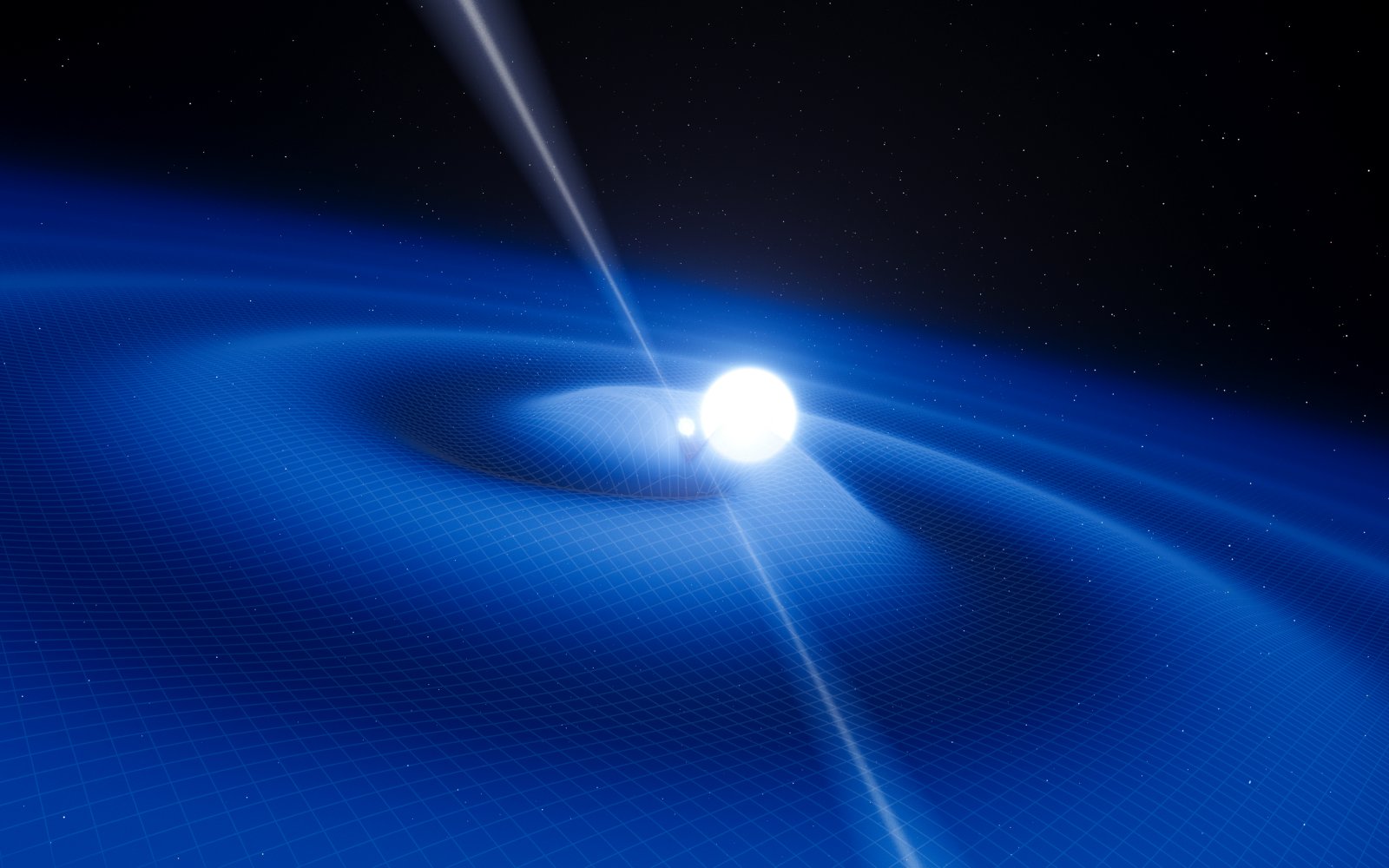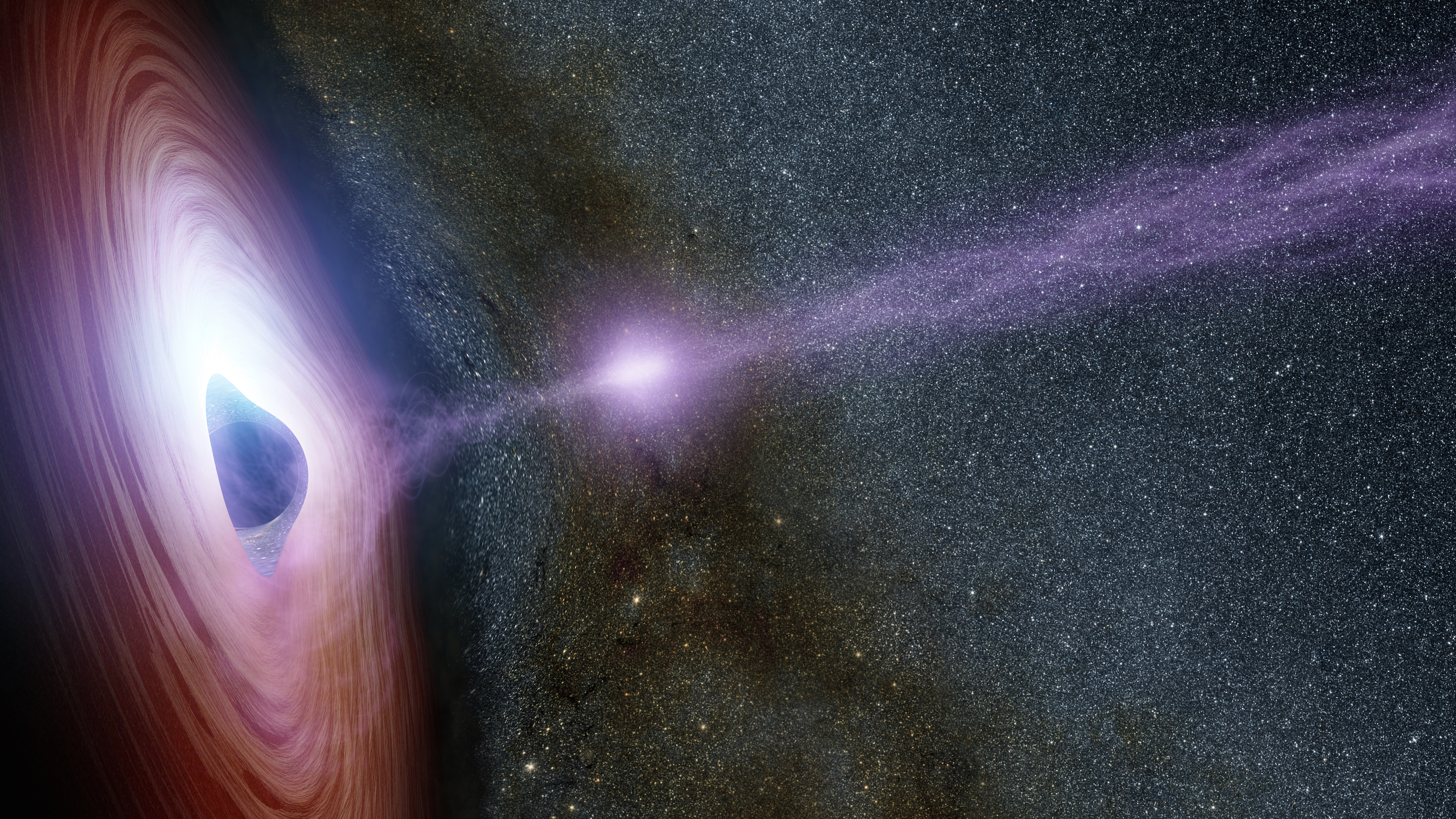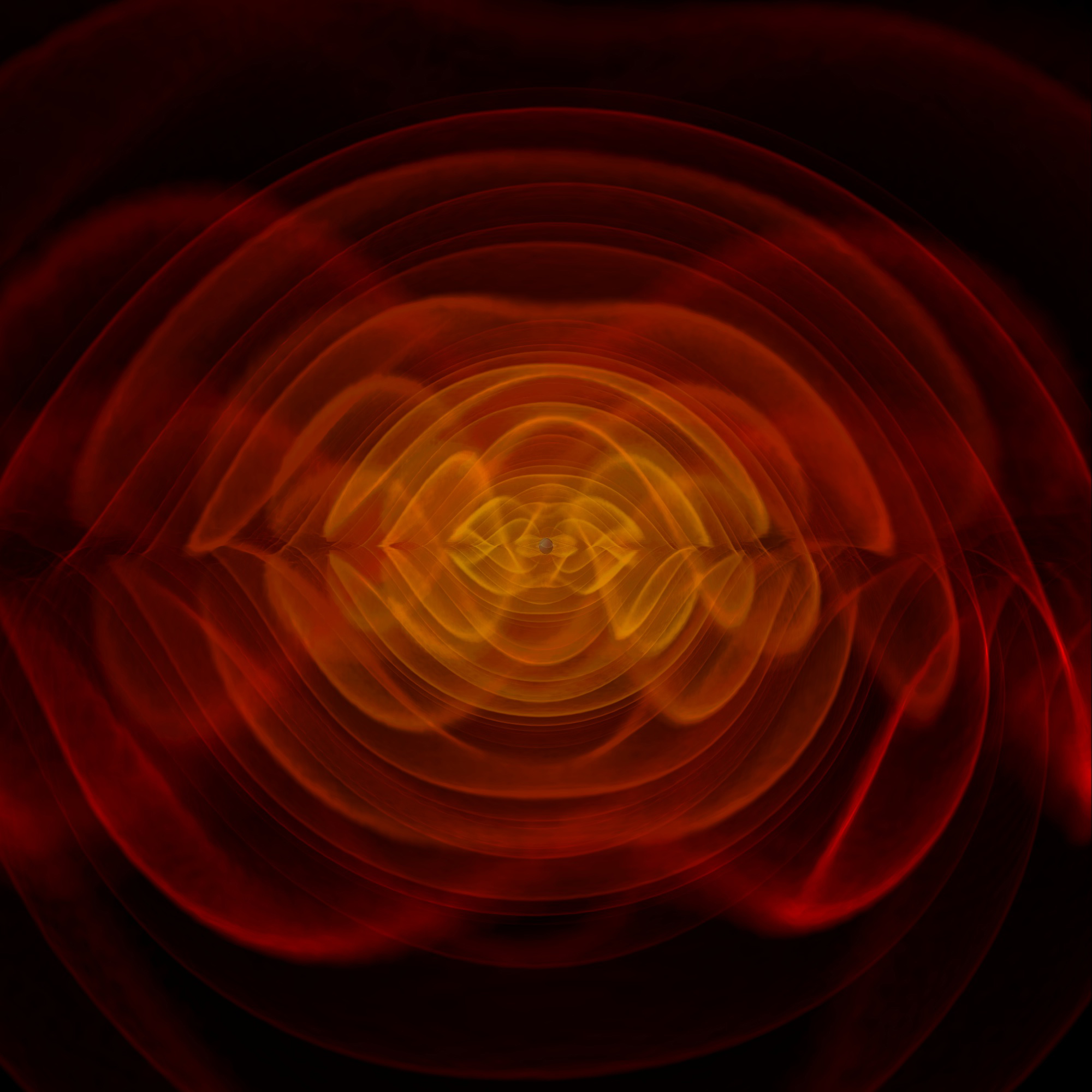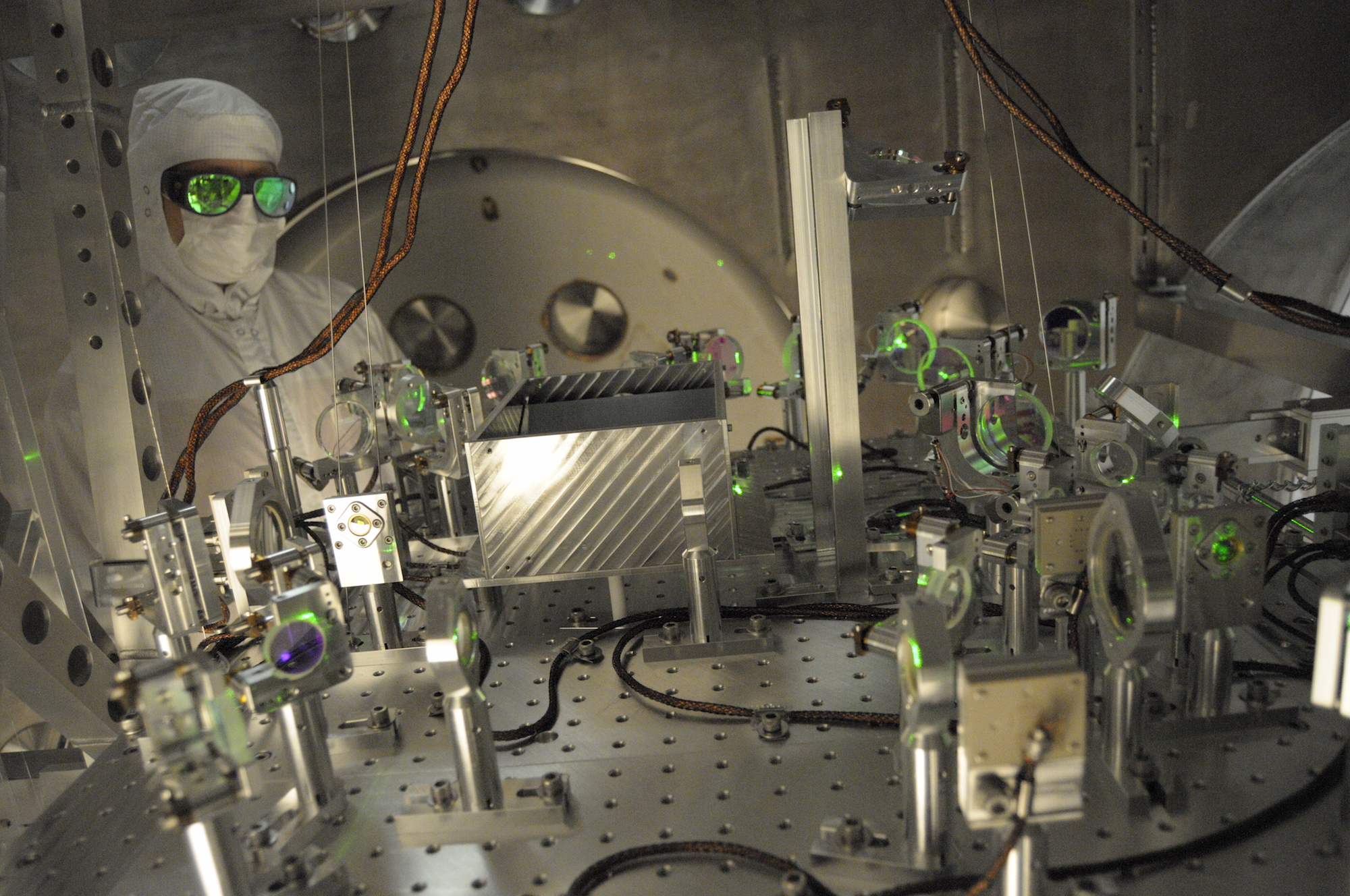Revealed: The billion-year soundbite

Einstein was right all along. The discovery of gravitational waves proves the universe is talking to us – and listening to it will take us to places we’ve never been before
Published 12 February 2016
Physicists have detected vibrations from a massive collision of two black holes over a billion years ago in what is the incredible direct discovery of gravitational waves – Albert Einstein’s theoretical but previously undetected ripples in space-time.
It amounts to the discovery of a whole new spectrum through which to observe phenomena that will lead to unimaginable new technologies and knowledge.
By detecting gravitational waves astronomers will for the first time be able to actually see and explore the secrets of mysterious phenomena like black holes and neutron stars, says University of Melbourne physicist Professor Andrew Melatos, a member of the international team that has now discovered gravitational-waves and directly confirmed Einstein’s theory.

Astronomers will even be able to use gravitational waves to look back in time to the early stages of the beginnings of the universe and the Big Bang. The history of the Big Bang and its immediate aftermath is shrouded because the universe then was too dense to transmit light.
He says it is inevitable that gravitational waves will be harnessed to create undreamt of new technologies. For a start, gravitational waves pass easily through all matter meaning the signal can never be interrupted or blocked. For this reason they are a powerful astronomical tool.
“There will be countless applications that we can’t even begin to imagine today,” says Professor Melatos, a theoretical astrophysicist at the School of Physics. “We know that every time in history when there is a discovery like this, once the knowledge is out there nature has this way of presenting opportunities.”
Just like Heinrich Hertz, who demonstrated the existence of radio waves in the 1880s, he says today’s physicists can’t possibly know where this will ultimately lead. “Hertz could never have imagined that we’d all be using radio waves on mobile phones and to update our Facebook accounts. So there will be stuff that we just can’t imagine.”
Over one billion years ago, in a galaxy one billion light years from Earth, two black holes with a combined mass 65 times that of the sun collided sending out a wave of vibrations rippling through space-time, which passed through Earth on September 14 last year. By the time they reached us the vibrations were tiny - a thousand times less than the diameter of a proton, which itself is one million times smaller than an atom. But an international collaboration of physicists in the US was straining to hear with the most sensitive listening devices known to humanity.

Physicists have been looking for gravitational waves ever since Einstein postulated their existence a hundred years ago as part of his theory of relativity. The discovery has now finally been announced in the journal Physical Review Letters following months of painstaking work to verify the data.
The wave was detected by two separate specially built facilities in the US, one in Louisiana and the other 3,000km away in Washington State. At each facility lasers are beamed down tubes four kilometers long onto the smoothest silica mirrors ever made in order to detect the tiniest vibrations.
The project is the work of the Laser Interferometer Gravitational-wave Observatory (LIGO) led by the California Institute of Technology and Massachusetts Institute of Technology. It includes the Australian Consortium for Interferometric Gravitational Astronomy (ACIGA) of which the University of Melbourne is a member.
Professor Melatos has been providing theoretical input and computer modelling to the project since 2007. His team also uses supercomputers and smart algorithms to scour the LIGO data for tiny signals from neutron stars. He says the results are an “awesome” validation of Einstein’s theory. “We now suddenly have a completely new way of doing astronomy,” he says.
A limiting factor in terms of developing new technology is that currently we have no way of making gravitational waves that are strong enough to be detected. When we move our arms we are making gravitational waves, but the vibration is too tiny. It took a collision of two of the biggest phenomena in the universe, black holes, to create a gravitational wave strong enough to be detected by our instruments. But Professor Melatos says that as our detection technology improves we will be able to pick up weaker gravitational waves and so make technological applications possible.

“When you think of the strength of the radio waves that can be detected on today’s mobile phones compared to the radio waves that could be detected in the 1880s there is no comparison. So at some point it will become practical to make gravitational waves that we can detect ourselves but that is some time away.”
But he says there are developments we can already imagine that are on the immediate horizon. Until now astronomy has been based on observing the universe using electromagnetic waves like light waves, radio waves, x-rays and gamma rays that are all generated by moving electrical charges. In contrast gravitational waves are caused by mass moving through space, meaning that interpreting gravitational waves can tell us completely different things to electromagnetic waves.
For example, because black holes are so dense that no light can escape them we have been unable to see them directly. We have only been able to infer them from their effects on objects nearby. But both black holes and neutron stars can send out gravitational waves.
“The tone of the wave tells you about the internal structure of these black holes and neutron stars and that is why it is so important. It is the only way to really get to the heart of these phenomena.”

In the case of black holes they create detectable gravitational waves when they collide. While this is a rare occurrence in a single galaxy, there are trillions of galaxies out there which means it is happening regularly.
In the case of neutron stars, they create gravitational waves by their own rotation. A neutron star is a burnt out star that has collapsed in on itself creating the most dense object in the universe. Some neutron stars are spinning at a mind-boggling thousand times a second, compared with the Earth’s comparatively lazy spin of just once every 24 hours.
So what about finding other intelligent life in the universe? Could an extremely advanced alien civilisation use gravitational waves to send signals that we could eventually hear? Professor Melatos’ eyes light up.
“Certainly it is possible. It is pretty far out thinking, but possible,” he says.
But before any alien hunters get excited he cautions we’d need to develop much more sensitive technology to detect gravitational waves. So far it has needed a collision of black holes for the LIGO machinery to hear a gravitational wave. For us to hear a message now sent through gravitational waves it would require an inconceivably advanced alien technology.
“To make the gravitational waves strong enough for us mere humans to detect today, an alien civilisation would have to be able to control things as big as black holes and make them move somehow with giant machinery,” Professor Melatos says.

The discovery has sparked inevitable speculation of the project winning a Nobel Prize. But nothing will beat finding the wave.
“The discovery is its own reward, any of us will tell you that. It is a history-making moment. Just as we still remember the discoveries of Newton (gravity) and Kepler (laws of planetary motion), people will still be looking back and talking about this discovery in 500 years time,” he says.
Video: Paul Burston
Banner Image: Artist’s impression of a white dwarf star orbiting neutron star and sending out gravitational waves. Picture: ESO/L. Calçada
